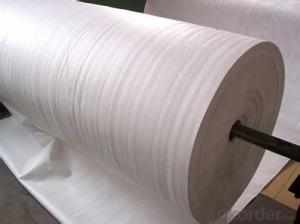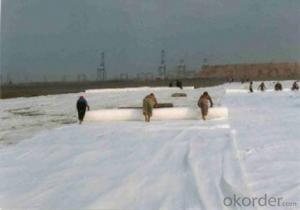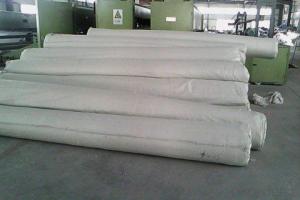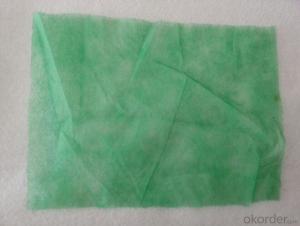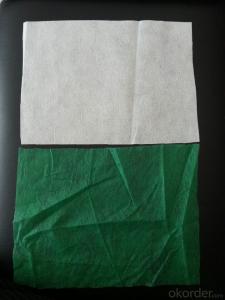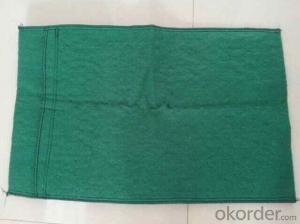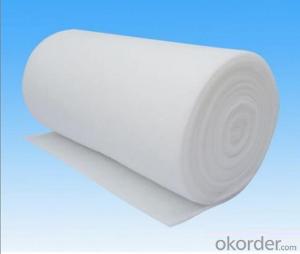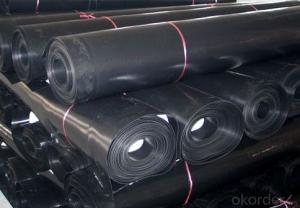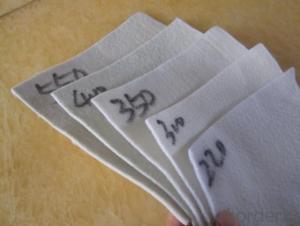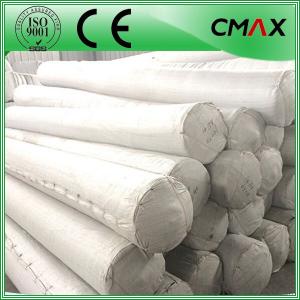Staple fibers needle punched non woven geotextile
- Loading Port:
- Qingdao
- Payment Terms:
- TT or LC
- Min Order Qty:
- 1000 g/m²
- Supply Capability:
- 100000 g/m²/month
OKorder Service Pledge
OKorder Financial Service
You Might Also Like
Staple fibers needle punched non woven geotextile
Introduction:
Staple fibers needle punched non woven geotextile is made of PP or PET staple fibers on carding cross- laying equipment and needle punched equipment.
Features: It owns the advantages of acid and alkali resistance, erosion resistance, aging resistance, large strength, stable size, good filtrability etc.
Application: Mainly applied in water conservancy, road and railway for strengthening, separation, reversed filter and drainage of projects
Specification:100g~800g
Width:2m~6m
Properties of Staple fibers needle punched non woven geotextile
Item (g/m2) | 100 | 150 | 200 | 250 | 300 | 350 | 400 | 450 | 500 | 600 | 800 | Note |
Mass error in unit area (%) | -8 | -8 | -8 | -8 | -7 | -7 | -7 | -7 | -6 | -6 | -6 | |
Thickness (mm) ≥ | 0.9 | 1.3 | 1.7 | 2.1 | 2.4 | 2.7 | 3.0 | 3.3 | 3.6 | 4.1 | 5.0 | |
Error of width (%) | -0.5 | |||||||||||
Breaking strength (KN/m)≥ | 2.5 | 4.5 | 6.5 | 8.0 | 9.5 | 11.0 | 12.5 | 14.0 | 16.0 | 19.0 | 25.0 | MD/CD |
Elongation at break | 25~100% | |||||||||||
CBR puncture resistance (KN)≥ | 0.3 | 0.6 | 0.9 | 1.2 | 1.5 | 1.8 | 2.1 | 2.4 | 2.7 | 3.2 | 4.0 | |
Equivalent Pore size O90( O95) | 0.07~0.2 mm | |||||||||||
Vertical permeability coefficient | K×(10-4~10-3)cm/s | K=1.0-9.9 | ||||||||||
Tearing strength (KN)≥ | 0.08 | 0.12 | 0.16 | 0.20 | 0.24 | 0.28 | 0.33 | 0.38 | 0.42 | 0.46 | 0.60 | MD/CD |
Images of non woven geotextile
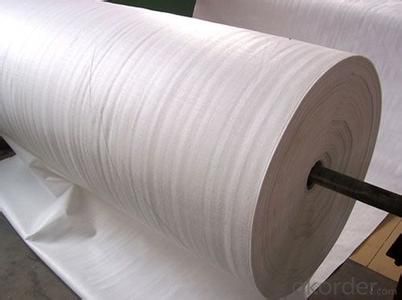
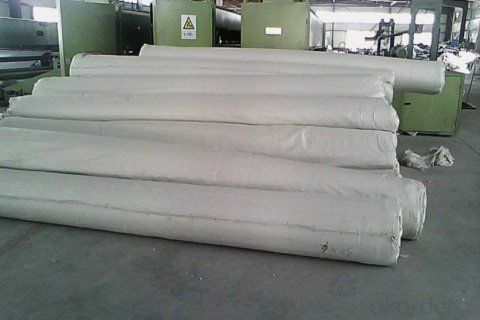
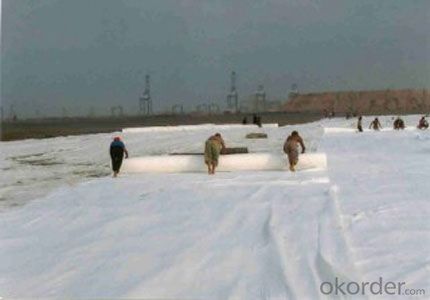
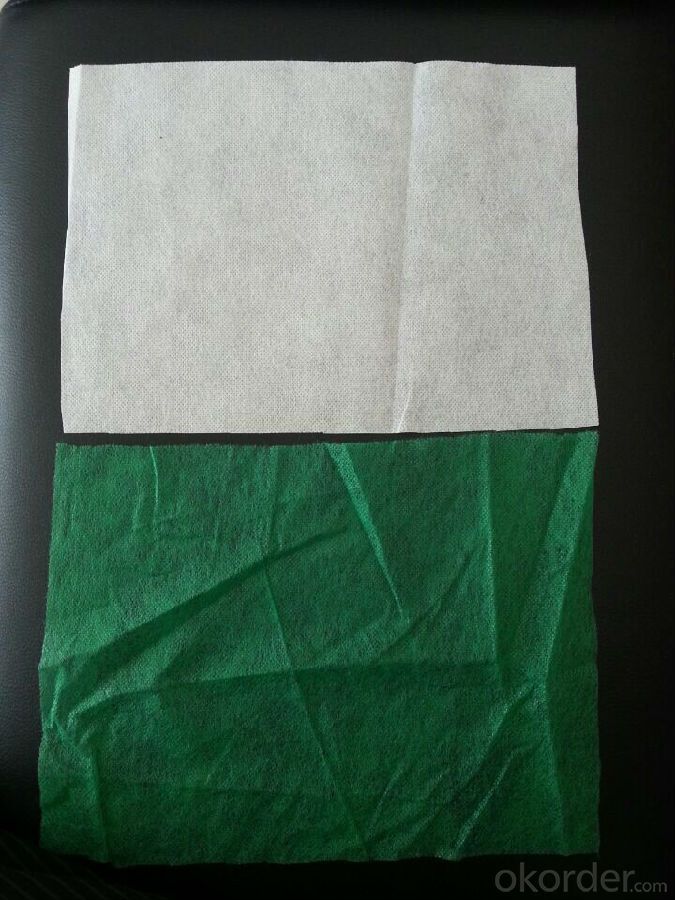
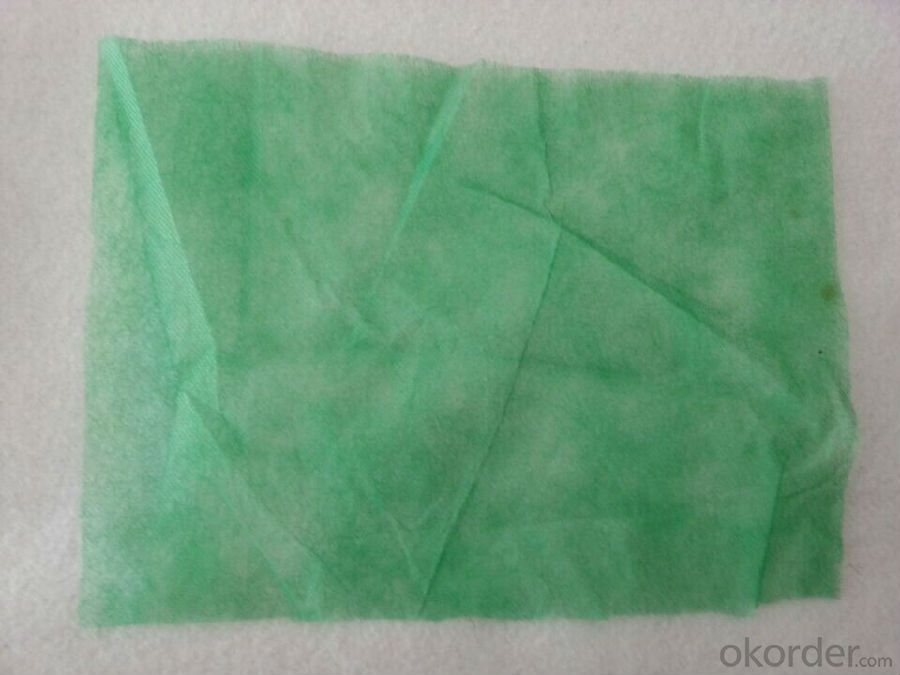
- Q:How do geotextiles aid in the protection of geomembranes?
- Geotextiles aid in the protection of geomembranes by acting as a barrier between the geomembrane and the surrounding soil or aggregate. They provide cushioning and support, preventing direct contact and potential damage to the geomembrane from sharp objects or uneven surfaces. Additionally, geotextiles can assist in preventing soil erosion and the migration of fine particles, enhancing the overall stability and longevity of the geomembrane installation.
- Q:How are geotextiles tested for strength and durability?
- Geotextiles are typically tested for strength and durability through various methods such as tensile strength tests, puncture resistance tests, tear resistance tests, and UV stability tests. These tests help determine the geotextiles' ability to withstand different forces, environmental factors, and potential wear and tear, ensuring their quality and performance in different applications.
- Q:Geotextile price in the end is how much?
- Geotextile raw materials are also different prices, geotextile prices with the market changes, geotextile prices from one yuan to twenty yuan variable. After-sales service and thoughtful, customer satisfaction as the goal. Hongxiang geotechnical
- Q:What are the specifications for geotextiles in erosion control projects?
- The specifications for geotextiles in erosion control projects typically include factors such as tensile strength, permeability, thickness, and specific weight. They should be able to withstand the forces of soil erosion, have a suitable permeability to allow water to pass through while retaining the soil, and be of a thickness and weight that can effectively support the intended application.
- Q:Will geotextiles generally use where?
- Mainly used in the following major aspects: Water conservancy projects: seawall, river embankment, lake embankment project; reservoir reinforcement project; reclamation project; flood control. Highway and railway airway works: soft foundation reinforcement treatment; slope protection; road anti-reflective crack structure layer; drainage system; green isolation zone. Electrical engineering: nuclear power plant basic engineering; water and electricity dam engineering; hydropower project. In my own years of construction experience, I feel geotextile road fill in the road filled with more, really hope to help you!
- Q:Are geotextiles suitable for use in gabion walls?
- Yes, geotextiles are suitable for use in gabion walls. They can be used as a filter fabric to prevent soil erosion and improve drainage within the gabion structure. Additionally, geotextiles help to separate different layers of materials, preventing mixing and maintaining the stability of the gabion wall.
- Q:How are geotextiles affected by UV exposure?
- Geotextiles are usually made of synthetic materials such as polypropylene or polyester, which can be negatively affected by prolonged exposure to UV radiation. UV exposure can cause degradation and weakening of the fibers, leading to reduced tensile strength and overall performance of geotextiles. To mitigate this, manufacturers often add UV stabilizers to enhance their resistance to UV radiation, thereby extending their lifespan and ensuring their effectiveness in various geotechnical applications.
- Q:5KN or 50KN
- I answered someone else on this question 1. multiply the 1.5th of the expected value of the geotextile sample by the size of the geometric cloth. 2. If you do not know the expected value, it should have a standard tensile strength range, with the tensile strength multiplied by the cross-sectional area of geotextile (thick by the width) to find the force value. 3. If you do not know, it is recommended to choose 50KN or 100KN equipment. Of course, if you need to test the geotextile was cut into a width that is particularly small, then you can use a small amount of force, but it is recommended if you choose from 5KN and 50KN election 50KN good.
- Q:Can geotextiles be used in geotextile wrapped columns?
- Yes, geotextiles can be used in geotextile wrapped columns. Geotextiles are commonly used as a wrapping material for columns in geotechnical engineering applications. They provide reinforcement and confinement to the columns, enhancing their load-bearing capacity and stability. Additionally, geotextiles help prevent soil erosion and facilitate proper drainage, further improving the performance of geotextile wrapped columns.
- Q:Geotextile how to sample
- It is best in the middle of a piece of cloth cut 1 square meters on the line
1. Manufacturer Overview |
|
|---|---|
| Location | |
| Year Established | |
| Annual Output Value | |
| Main Markets | |
| Company Certifications | |
2. Manufacturer Certificates |
|
|---|---|
| a) Certification Name | |
| Range | |
| Reference | |
| Validity Period | |
3. Manufacturer Capability |
|
|---|---|
| a)Trade Capacity | |
| Nearest Port | |
| Export Percentage | |
| No.of Employees in Trade Department | |
| Language Spoken: | |
| b)Factory Information | |
| Factory Size: | |
| No. of Production Lines | |
| Contract Manufacturing | |
| Product Price Range | |
Send your message to us
Staple fibers needle punched non woven geotextile
- Loading Port:
- Qingdao
- Payment Terms:
- TT or LC
- Min Order Qty:
- 1000 g/m²
- Supply Capability:
- 100000 g/m²/month
OKorder Service Pledge
OKorder Financial Service
Similar products
New products
Hot products
Hot Searches
Related keywords
